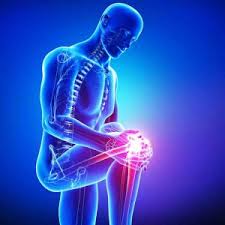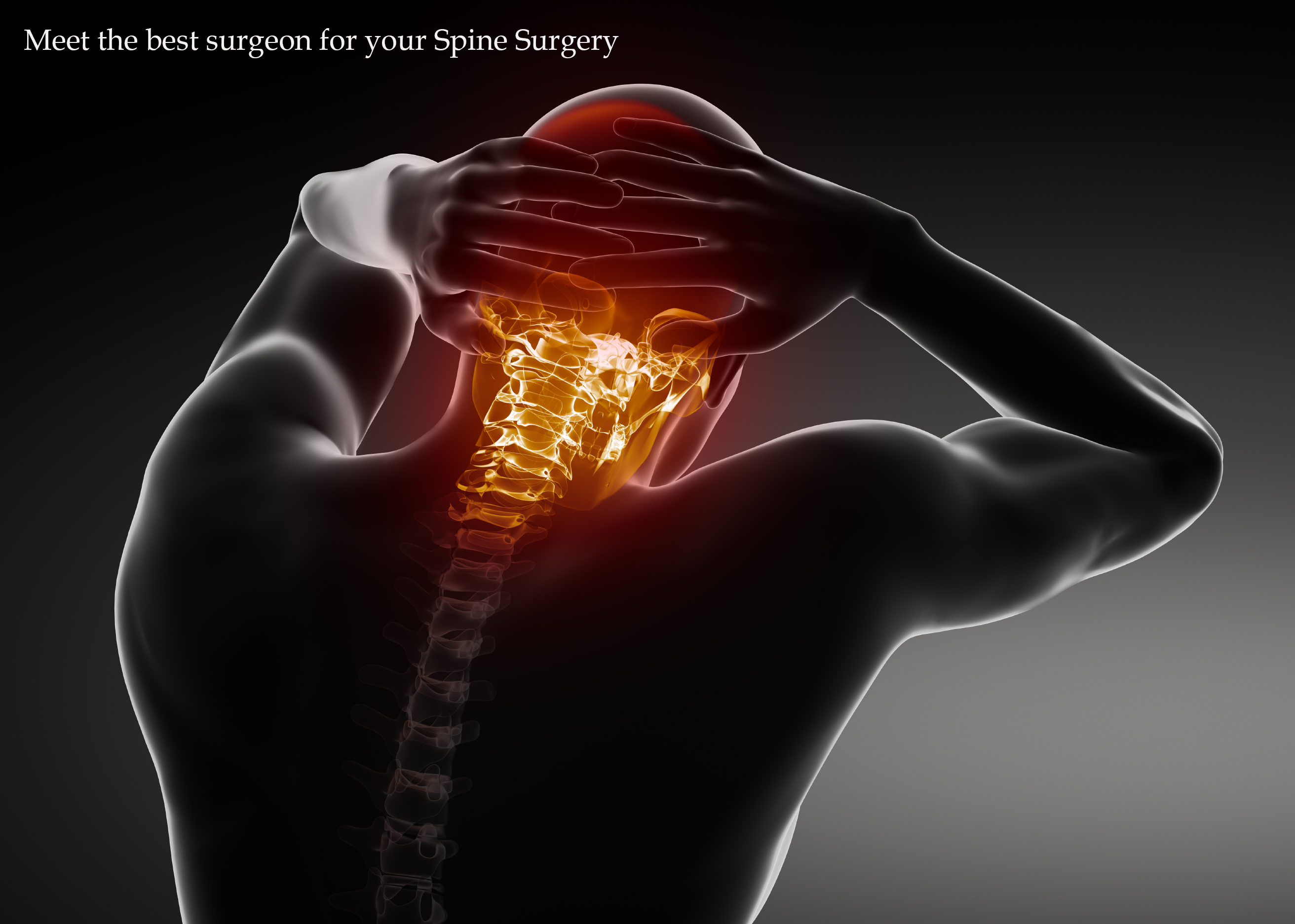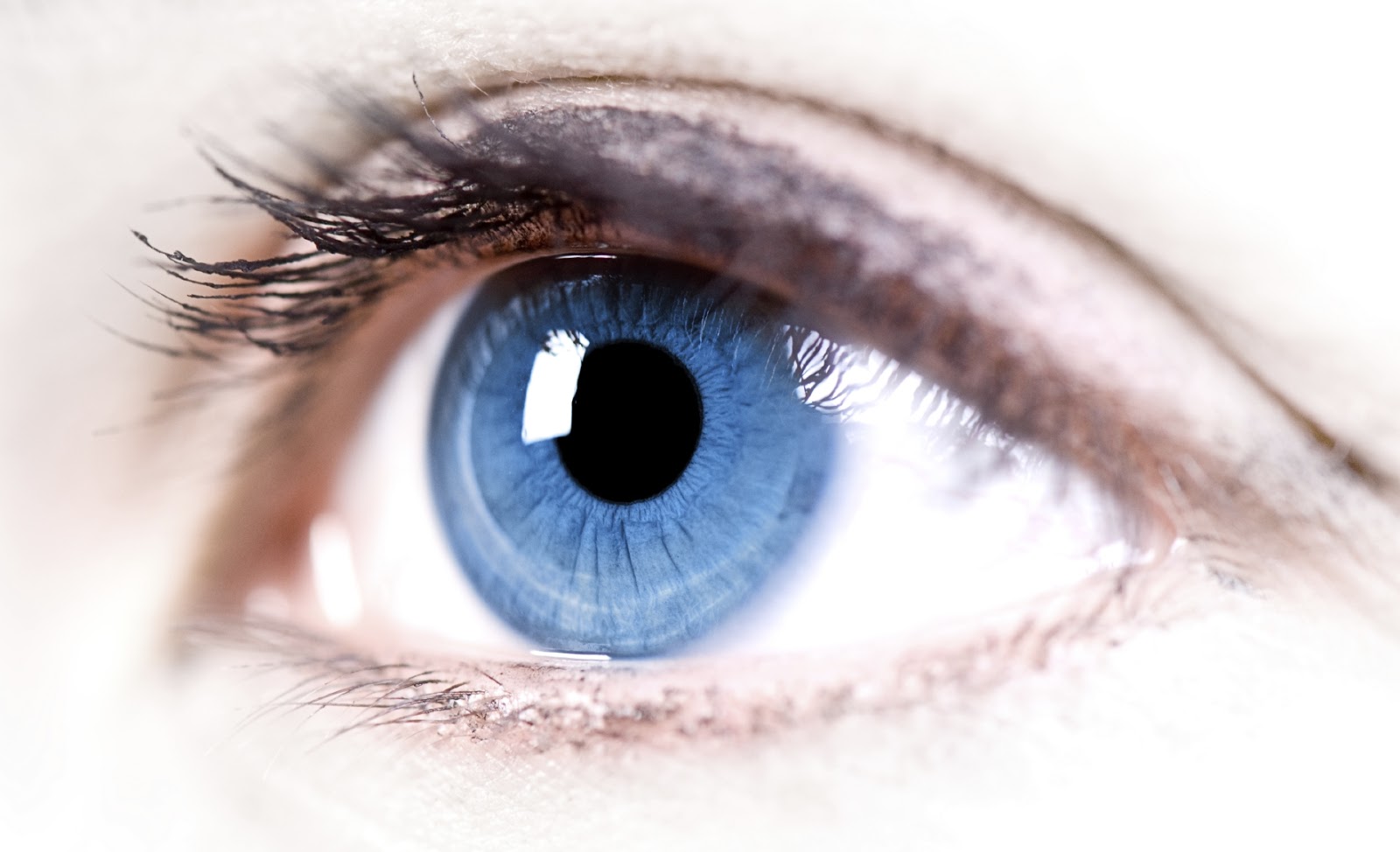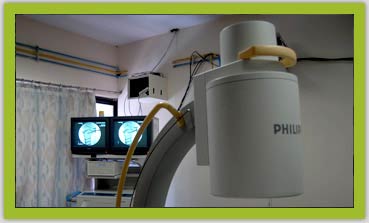Following a Myocardial infraction or heart attack, the area of infraction often leaves behind by a nonfunctional scar. This can leads to a dilatation of the heart over a period of time and change its shape from a normal elliptical one to a globular one resulting in reduction of heart function and can lead to heart failure. By an operation called Linear Endoventricular Patch Plasty or commonly called Modified Dor’s Procedure, the elliptical shape of heart is restored, thus restoring its normal pump function. The procedure is done in isolation or along with the routine CABG.
Scar and Keloid Reduction : Treatments
Keloids are skin-covered outgrowths that occur at sites of injury. They are warm, itchy, pink and at times painful.
Capsule Endoscopy: Treatments
Capsule Endoscopy: – Evaluates small intestine which cannot be assessed by Gastoscope and Colonoscope.
Man has been fascinated since long to view the milieu interior of gastrointestinal tract. We have advanced video endoscopes, which can permit viewing of esophagus, stomach, and duodenum with a traditional gastroscope. Likewise the entire large intestine and part of terminal ileum can be scanned to a great detail by using colonoscope. Detection and treatment of various upper GI and lower GI lesions including tumors, ulcers and bleeding lesions has been simplified with endoscopic methods.
However, the small intestine is difficult to study by endoscopic methods due to the enormous length (14 feet) and anatomic feature (loosely supported and looped structure on the mesentery). Push enteroscopy can examine part of jejunum and a double balloon technique can examine almost the entire small bowel. However endoscopic examination with these techniques is very cumbersome (can take up to 4 hrs), with inadequate information and is not patient friendly. These difficulties with traditional flexible instruments propelled the development of a technological marvel; an endoscope that could make its way through the 14 feet of small bowel. A pill sized camera with sufficient battery life to image the entire small intestine- Capsule endoscopy.
This unique video capsule is 11×26 mm n size and weighs less than 4 grams. The device captures two images per second and has a battery half-life of 8 hours.
After a overnight fasting, patient swallows the capsule which travels through the GI trace by means of peristalsis. Images are transmitted by digital radio frequency communication channel to an external data recorder unit. The data recorder is tied around patient like a Holter monitor. Patient can continue normal activities during the entire procedure, which can be done as a ambulatory procedure. The data recorder is then connected to a dedicated computer for analysis. The non-invasive nature of capsule endoscopy makes it an attractive option over traditional endoscopy, as it requires little preparation, with no need for sedation. The procedure does not cause any discomfort to the patient and provides a more physiologic view of small intestine
Capsule endoscopy has been found to be superior to CT scan or MRI, for detection of small bowel lesions like tumors, ulcerations secondary to NSAIDs, vascular malformations, diverticulae etc. In patients with bleeding from small intestine, capsule endoscopy has been shown to be as accurate as intraoperative enteroscopy and superior to angiogram and tagged RBC nuclear scan. Capsule endoscopy has been shown to change patient management in up to 75% of cases with GI hemorrhage from small bowel. Now the last frontier in luminal endoscopy (visualization of small bowel) has also been conquered with this mega invention.
Spine and its related treatments
The spine also called the back bone is designed to give us stability, smooth movement as well as providing a corridor of protection for the delicate spinal cord. It is made up of bony segments called vertebra and fibrous tissue called inter vertebral discs. The vertebra and discs form a column from your head to the pelvis giving symmetry and support to the body. The spine can be divided into 4 parts. The uppermost is the cervical region, consisting of 7 small vertebrae that form the neck. As we move down the body, the next 12 vertebra make up the thoracic region or mid back from which the ribs are hinged. The 5 lumbar vertebrae are the largest of the mobile vertebra and supports 2/3 of the body’s weight. The lowest region of the spine is the sacrum and coccyx. The sacrum is a triangular plate made up of five fused vertebral segments while the four coccyxes terminate the bony spine.
Treatments and procedures:
1.Deformity Correction:
Scoliosis and Kyphosis surgery to straighten a bent spine
2.Minimally Invasive Spine Surgery:
Pain Relief in case of slip disc, through Key Hole Surgery
3.Spinal Reconstruction:
Restoring Normalcy to spine with artificial materialincase of spinal tumours, spinal fractures and spinal
infections
4.Movement Preserving Spine Surgery:
Artificial Disc Replacement and Preserving Spine Flexibility in case of degenerative spinal disorders
5.Spinal Tumor Surgery:
Removal of Tumor and Prevention of Paralysis
6. Spinal Fracture:
Early surgery to prevent Spinal Cord Damage
7. Revision Spine Surgery:
Complex Spine Surgeries on patients with failed previous spine surgery
8. Geriatric Spine Surgery:
Ensuring better quality of life through spine surgery using minimally invasive spine surgery techniques
Services & Facilities:
.Intra-Operative SSEP and MEP Neuro Monitoring
.Advanced Spine Instrumentation for Minimally Invasive Spine Surgery
.Physiotherapy with Rehabilitation following spine surgery
.CathLab facility for Interventional Neuro-Spinal Radiological Procedures
Hepatitis and its treatments
What is Hepatitis?
Many people mistakenly think that Hepatitis means Viral Hepatitis, and that all forms of hepatitis are contagious. Actually, the word Hepatitis is a catch-all term that refers to any inflammation of the liver — the irritation or swelling of liver cells from any cause.
What are its symptoms?
Hepatitis may occur with limited or no symptoms, but often leads to yellow discoloration of the skin, mucus membranes, and conjunctivae, poor appetite and malaise. Hepatitis is acute when it lasts less than six months and chronic when it persists longer. The condition can be self-limiting (healing on its own) or can progress to fibrosis (scarring) and cirrhosis.
Types and causes of Hepatitis?
Several viruses are known to cause Hepatitis. Common forms of Viral Hepatitis include Hepatitis A, B, and C:
Hepatitis A: Hepatitis A is a virus that causes liver disease. It is most commonly found in contaminated food or water. Hepatitis A is the least dangerous form of Hepatitis because individual affected by them almost always recuperate naturally. Also, it does not lead to chronic inflammation of the liver. But about 15% of people with Hepatitis A become so ill that they need hospitalization; that is why anyone at risk of infection, as well as all people with any form of chronic liver disease, should get the Hepatitis A vaccine.
Hepatitis B: This form of Hepatitis causes liver damage. Most people recover from the virus within six months, but sometimes the virus will cause a lifelong chronic infection, possibly resulting in serious liver damage.
It can spread through sex (100 times more efficient than the HIV virus), blood transfusions (mostly before 1975), and needle sharing by intravenous drug addicts. The virus can pass from mother to child at birth or soon afterward; the virus can also pass between adults and children to infect whole families.
Hepatitis C: Hepatitis C is the No. 1 reason for liver transplant. At least 80% of patients with Hepatitis C develop a chronic liver infection. It often does not show any symptoms. No vaccine is yet available to prevent Hepatitis C.
It is usually spread through contact with blood or contaminated needles, including tattoo needles. The disease can be passed on through blood transfusions. As opposed to Hepatitis B, Hepatitis C is only infrequently spread through sex.
Prevention/Treatment:
Hepatitis A:
Immunization of children (1-18 years of age) consists of two or three doses of the vaccine. Adults need a booster dose six to twelve months following the initial dose of vaccine. In order for the vaccine to be effective the individual has to be 15–20 years or more.
Hepatitis B:
Safe and effective vaccines provide protection against Hepatitis B for 15 years and possibly much longer. Currently, the Centre for Disease Control and Prevention recommends that all new-borns and individuals up to 18 years of age, and adults at risk of infection be vaccinated. Three injections over a six to twelve month period are required to provide full protection.
Hepatitis C:
No vaccine is yet available to prevent hepatitis C.
These measures would indeed be helpful when countering the disease. Further, it is always good to avoid any situation that would lead to Hepatitis.
Low-Back Pain: Treatments
The back bears a heavy load; it supports the weight of the body, sustains the weight of objects that are lifted or carried, and absorbs the stresses that result when parts of the body move. The back is a complex combination of muscles, ligaments, tendons, and bones-all attached to the backbone. The backbone is a series of interconnected blocks of bone called vertebrae. They form a tube-like “vertebral canal” that contains and protects the spinal cord and its bundles of nerves.
Causes of Low-Back Pain:
Low-back pain may be caused by abnormal development of the backbone, excessive stress on the back, injury, or any one of a number of physical disorders that affect the bones or the discs in the spine. The following are among the most common:
1. Ruptured or Herniated Disc. This is a frequent cause of low-back pain, and is sometimes called a “slipped” disc. Actually, an intervertebral disc cannot “slip” out of position. It can rupture, however, and when it does, some of the disc’s fragments push backward (prolapse posteriorly) into the spinal canal and press on nearby nerves, causing pain, numbness, tingling, and sometimes weakness in the leg or foot. A disc may rupture after a relatively minor stress, such as bending over to pick up an object. Pain may occur immediately after the rupture occurs, or it may grow steadily worse over the next few minutes or hours. Pain from a ruptured disc may involve the center or one side of the back, and it spreads gradually to the leg. This leg pain, which may be accompanied by numbing or tingling sensations, may affect the thigh, the back or outside of the calf, or the edge or top of the foot. Called Sciatica, leg pain or numbness is caused by the pressure that the ruptured disc’s fragments exert on the components of the sciatic nerve, which runs from the spinal cord down the thigh to the calf and foot. Each vertebra has a cylinder-shaped body, a vertebral arch, and several bony protuberances. The body of the vertebra rests on a cushion of tissue, known as an intervertebral disc that can act as a shock absorber. The vertebral arch extends from the body of the vertebra up and over the spinal cord to safeguard the spinal nerves. The bony protuberances are the places at which muscles, ligaments, tendons, and other bones join the backbone; they allow for normal flexibility of spinal movements.
2. Degeneration of the Vertebrae or Discs. Low-back pain occurs when parts of the vertebrae or the intervertebral disc deteriorate. When vertebral joints begin to wear down, the condition is called osteoarthritis. When the intervertebral discs start to degenerate, the spinal canal may become narrow and bone spurs can develop, a condition known as Spondylosis. Osteoarthritis and spondylosis produce intermittent aching or stiffness in the low back. Such low-back pain may spread into the buttocks and the thighs and may be aggravated by exercise or poor posture. People with osteoarthritis or spondylosis often feel stiff when they try to bend forward or stretch backward, because with these diseases, the backbone loses its mobility.
3. Spinal Stenosis. Narrowing of the vertebral canal is known as spinal stenosis. It may be due to overgrowth of vertebral joints associated with backward bulging of the discs or to degenerative diseases such as osteoarthritis or spondylosis (accompanied by thickening of the normal spinal ligaments). Pain from spinal stenosis, which typically occurs during walking or other exercise, develops after a few minutes of activity, accompanied by numbness, tingling, or cramps in the legs, and eases after a few minutes of rest
4. Sprains. Just as a sudden twist of the foot can cause a sprained ankle, an abrupt movement of the spine can sprain the muscles and ligaments of the back. A sprain is a partial tear of a ligament that has been overstretched. The pain from a sprain is located over the damaged ligament.
5. Infection. An infection in one part of the body, such as tuberculosis, can spread to the backbone and produce an inflammation of the bone or, occasionally, an abscess. Back pain from an infection develops slowly and eventually becomes severe. In addition to the back pain, a spinal infection raises the patient’s temperature and brings on an overall feeling of weakness and bouts of chills. The pain is often associated with severe spasms and stiffness of the back.
6. Tumors. Spinal tumors are uncommon. They may arise in the vertebral column or within the spinal cord or nerve roots, or they may spread to the spine from cancer elsewhere in the body. Spinal tumors cause pain in the back and may produce weakness or numbness
7. Ankylosing Spondylitis. Ankylosing Spondylitis is an inflammation of the backbone that causes stiffness. It occurs mainly in men between the ages of 15 and 25. In the most severe form of the disease, the backbone becomes completely rigid. Initially, the low back is stiff and painful, and the pain is aggravated by rest. A person with Ankylosing Spondylitis will often awake with an aching and stiff back and will gain relief only by exercising.
Before an Operation is considered:
Many of the conditions that bring about low-back pain (ankylosing spondylitis, sprains, osteoarthritis, and even a prolapsed disc) can be treated through rest, appropriate medication, and mild exercise. An operation is not considered, in fact, until these and sometimes other conservative measures have proved unsuccessful. If a trial period of conservative therapy produces unsatisfactory results and low-back pain continues to interfere with a person’s day-to-day activities, an operation may be considered.
Even when an operation becomes a possibility, it will not be attempted until the spine has been carefully assessed. Before performing a surgical procedure, the surgeon must know the exact nature of the problem in the back. Consequently, he or she will study the back by means of X-rays or other tests, such as myelography, computerized axial tomography (CT), or magnetic resonance imaging (MRI).
In myelography, a radiopaque material is injected into the vertebral canal to outline any disorders that may be found in the vertebrae or discs. Usually, the patient is placed on a special table that makes it possible to change his or her position, thereby distributing the injected material up and down the vertebral canal. Because myelography may cause headaches, which can be aggravated by sitting up or standing, patients may be asked to remain in bed for a day after the test.
During CT, a patient is placed in a large, circular device that projects X rays through a cross-section of the body. The X-rays outline the densities of various tissues, and by analyzing these densities, a physician can detect abnormalities.
Magnetic resonance imaging (MRI) is a relatively new technique for showing the bones and other tissues of the body. MRI scans do not involve the use of X-rays, and they may or may not include the injection of a contrast agent in the vertebral canal to enhance the images seen by the physician. An advantage of this method is that soft tissues (such as ruptured discs) show up much better on an MRI scan than they do on an X-ray or a CT scan. The test takes a longer time to perform than an X-ray or CT, and the patient must lie quietly in a large magnetic tube for the time of the examination. However, this type of examination is proving to be a safe and highly effective way to diagnose spinal disorders.
In addition, electrical studies of the muscles and nerves may be useful in diagnosing and managing spinal disorders.
About Operations on the Back:
The type of operation a surgeon performs depends on the nature of a patient’s back problem. However, most procedures involve a Fenestration, which may require the partial removal of the vertebral arch to gain access to the cause of the patient’s low-back pain. If a disc has ruptured, a surgeon will perform a Microdiscectomy to investigate the vertebral canal, identify the ruptured disc, and remove a good portion of the degenerated disc material, especially those fragments that press on the nerve roots.
The surgeon may consider a second procedure-Spinal Fusion-if he or she feels that stabilization of the spine is necessary. A spinal fusion is performed by fusing the vertebrae together with bone grafts; sometimes, the grafts are combined with metal plates or other types of instruments.
Some types of herniated discs are suitable for treatment by microsurgery or by a technique known as percutaneous discectomy, in which the disc is repaired through the skin without making a surgical incision. For this technique, the surgeon uses an X ray as a guide for inserting a large bore needle into the center of the disc; the central portion of the disc is then removed by using fine instruments that are placed through the needle. You should discuss with your surgeon the various treatment options to determine which is the most appropriate for your specific problems.
To treat spinal stenosis, the surgeon makes an incision that is long enough to allow inspection of all of the vertebrae that have contributed to narrowing of the vertebral canal. After performing a limited laminectomy, the surgeon performs a decompression operation by entering the vertebral canal and removing the material that is pressing on the spinal nerve roots. Occasionally, some form of spinal fusion or other type of stabilization may be indicated.
When a patient has a spinal tumor, the physician may opt to treat the patient with radiation or chemotherapy rather than a surgical operation. If an operation is needed, the surgeon performs a laminectomy, locates the tumor, and removes it from the spine, the spinal cord, and the nerve roots. Some tumors require that the operation be approached from the front of the spine, followed by spinal stabilization. Following the removal of a spinal tumor, the surgeon decides if further radiation therapy and/or chemotherapy should be given.
When a patient has a spinal infection with an abscess in the back part of the spinal canal, the surgeon removes the vertebral arch, locates the abscess, and drains away the pus. If the abscess is toward the front (anterior) in the disc space, the surgeon may make an anterior approach to the vertebral bodies. Appropriate antibiotics will be given to cure the infection.
Recovering from the Operation:
Recovering after back surgery varies with the type of operation that was performed. Following ordinary disc removal, most patients are able to get out of bed and move about on the same day after surgery and get discharged on the very next day. Patients who have undergone a spinal fusion or an operation for stenosis take longer to become mobile (upto 12-24 hours), and these patients may remain in the hospital for longer periods of time (48-72 hours) after the operation. In addition, they may be required to wear a brace or cast for a few weeks to months after surgery.
The length of stay for patients with spinal tumors depends on the type of tumor. Patients who have had an operation to drain an abscess of the spine stay in the hospital until the infection has been controlled.
A common problem after major back surgery is difficulty with urination. This problem usually subsides in three to four days. The insertion of a tube (catheter) into the bladder that will drain the urine may be necessary until the patient is able to void normally. After discharge from the hospital, most back surgery patients will need some time to recuperate before returning to their usual activities. The types of activities the patient can safely resume should be outlined by the operating surgeon and should be followed carefully by the patient. The period of recuperation varies, but it may range from weeks to months, and a back brace or physical therapy program may be recommended
Lifestyle package for Women
Lifestyle Package for Women
According to studies, an unhealthy lifestyle can age a woman’s skin by more than 10 years and deteriorate the health faster than compared to men due to the weak physical specification. A lifestyle health checkup not only can help detect the risk factors but also improve a healthy lifestyle in order to live longer.
Benefits of the Package:
• Checkups especially designed to detect major health issues such as liver function test, cardiac risk evaluation and mammogram
• Use of latest technology for perfect assessment of the health
• Consultations with our medical experts
INVESTIGATIONS
• CBC
• ESR
• Blood grouping & RH typing
• Urine routine & microscopy
• Stool routine
• Peripheral Smear
• Audiometry
• PSA(Prostate Specific Antigen)
• Chest X ray
• Ultrasound abdomen & pelvis
• Sonomammogram(Less than 40 yrs)/Mammogram (Above 40yrs)
DIABETES EVALUATION
• Fasting Blood Sugar
• Post Prandial Blood Sugar
• HbA1C (Glycalated Haemoglobin)
Lipid Profile
• Total Cholesterol
• HDL
• LDL
• VLDL
• Triglycerides
Liver Function Test
• Alkaline Phosphatase
• SGOT
• SGPT
• GGPT
• Albumin
• Globulin
• Total Protein
• Total & Direct Bilirubin
KIDNEY PROFILE
• SR CREATININE
• SR Uric Acid
• Calcium
• Phosphorus
• BUN
Thyroid Profile
• T3
• T4
• TSH
CARDIAC RISK EVALUATION
• ECG
• ECHO Screening/Tread Mill Test
Other Investigations
• Vitamin B12
• Vitamin D
• Iron with TIBC
• Ferritin
CONSULTATIONS
• Physical examination
• Opthalmology Consultation
• Dental
• Diet Consultation
• Physician Consultation
• Gynecology Consultation
OCULAR AESTHETICS: Procedures
Alma (Harmony-XL) laser technology is used to treat peri-orbital pigmentation (dark circles), peri-orbital wrinkles, acne, acne scars, wrinkles on the face, pigmentation on the face, removal of unwanted facial hair, skin rejuvenation, skin tightening, vascular lesions, stretch marks, nevus, tattoo removal, warts, skin tags and scars. Laser is a safe and non-invasive, office procedure and is performed around the eyes using an eye shield.
The other procedures available include Chemical peeling, Microdermabrasion, Derma roller, Ellman radio surgery, Botox & Dermal fillers.
FACILITIES AVAILABLE:
1.Laser (Alma Harmony-XL platform)
2.AFT pulsed Light 570 – Pigmentation, Freckles, Melasma, Rosacea.
3.Infrared- Oculo facial Skin tightening, Scar, Stretch marks.
4.Erbium- YAG/Pixel-Post-Acne Scar, Skin rejuvenation, venous lake.
5.Q-switched Nd-YAG – Tattoo removal, Birth mark.
6.SHR (Super hair reduction)- Unwanted hair removal.
7.Chemical peeling-Pigmentation, Skin rejuvenation.
8.Microdermabrasion- Pigmentation, Skin rejuvenation, Post- Acne scars.
9.Derma roller-Post-Acne scars.
11.Ellman Radio-surgery-Skin tags, DPN, Warts.
12.Botox -Wrinkles.
13.Dermal fillers- Facial Rejuvenation.
14.Cosmetic Dermato-surgery-Scar revision.
15.Blepharoplasty-Cosmetic eye lid surgery.
16.Eyebrow surgery (Brow Lift).
17.Ptosis-Droopy eye lid correction.
18.Eyelid scar revision.
19.Radio frequency skin tightening.
AFT (ADVANCED FLUORESCENCE TECHNOLOGY):
AFT is the next generation of intense pulsed light for superficial vascular and pigmented irregularities to improvet patient’s skin colour with less discomfort and minimal skin damage. It requires approximately 5 to 8 sittings.
FILLERS:
Injection of hyaluronic acid for soft tissue augmentation used for wrinkles, scars, deep folds ( Naso-labial folds ,Peri-orbital folds) and to correct fat loss.
INFRARED – SKIN TIGHTENING:
Deliver deep dermal heating that induces neo collagenesis . A series of three to six treatments produces a tighter, fresher appearance – without pain or invasive procedures.
SHR (SUPER HAIR REDUCTION):
Hair removal is the most popular light-based aesthetic procedure in the world. SHR offers virtually pain-free hair removal procedure with no downtime.
ERBIUM- YAG/PIXEL:
Gives more youthful appearance with the High Power Pixel skin-resurfacing . A series of 4 to 6 virtually pain-free treatments will gradually stimulate new cells to replace aged and photo-damaged skin, with little patient downtime. It offers excellent reduction of post-acne scars.
High Power Q-Switched module is used for the non-invasive removal of various colored tattoos, birthmarks and benign pigmented lesions, providing deep penetration.
CHEMICAL PEELING:
Chemical peeling is a non-invasive procedure used to improve the skin’s appearance by applying a chemical solution to the skin, causing the top layers of skin to separate and peel off. Chemical peeling is done to reduce fine lines, treat mild acne scar, to diminish skin discoloration, such as sun tanning ,melasma, freckles, post-acne spots and to refresh skin texture and color using one or more chemical solutions, such as glycolic acid, trichloroacetic acid, salicylic acid. Around 6 to 8 sittings are required to achieve desired results.
MICRODERMABRASION:
Microdermabrasion is non-invasive mechanical exfoliation that removes the uppermost layer of dead skin cells from the face .For best results, it is recommended you get a series of 6 to 8 treatments. Microdermabrasion leaves skin with a fresher more glowing look,diminishes the appearance of fine lines ,wrinkles, enlarged pores, and coarse textured skin.
DERMAROLLER:
Derma roller is a device which has steel micro needles and are able to part pores on the top layer of the skin without damaging it. Derma roller reduces wrinkles, acne scar and stretch marks by increasing the levels of collagen and elastin in the skin.3 sittings are required to achieve desired results.
Ulcerative Colitis: Procedures
ABOUT THE DISEASE
It is an inflammatory bowel disease (IBD) causing long lasting swelling and inflammation of the colon (large intestine). There are tiny ulcers and small abscesses in the colon and rectum that flare up periodically producing symptoms, with periods of remission in between. It is closely related to another condition of inflammation of the intestines called Crohn’s disease. But unlike Crohn’s disease, it does not affect the esophagus, stomach or small intestine. It is a disease that can last years to decades. Men and women are affected equally. It most commonly begins during adolescence and early adulthood.
Ulcerative Colitis:
SYMPTOMS
• Rectal bleeding
• Abdominal pain or cramping
• Diarrhea
• Fever
• Tiredness
• Weight loss
• Night sweats
• Rectal pain
• Feeling the immediate need to have a bowel movement -Rectal urgency
• Joint pain or swelling
CAUSES:
The exact cause of ulcerative colitis is unknown, but it is likely caused by an abnormal response of the immune system in the gastrointestinal tract to something in the gut — food or bacteria in the intestines, or even the lining of the bowel — that causes uncontrolled inflammation. Risk factors include a family history of ulcerative colitis.
DIAGNOSIS:
– Endoscopy, such as colonoscopy or proctosigmoidoscopy
– Blood tests
– Stool samples
– Barium X-ray
– Other X-ray procedures, such as magnetic resonance imaging (MRI), or computed tomography (CT scan).
Colonoscopy needs to be repeated after every 1-2 years just to rule out colon cancer as the chances for the same increase in patients suffering from IBD.
TREATMENT METHODS:
There is no cure for this disease, medicines / immunomodulators / corticosteroids are used to control the immune system and reduce the inflammation. Hospitalisation might be required after every serious attack.
Dietary restrictions – small helpings, proper water intake (spread throughout the day) and stress management go a long way in containing the disease.
Surgery to remove the entire large intestine (colectomy), or both the colon and rectum (proctocolectomy) removes the threat of colon cancer. Surgery is usually recommended if you have:
– Colitis that does not respond to complete medical therapy
– Changes in the lining of the colon that are thought to be precancerous
– Serious complications such as rupture (perforation) of the colon, severe bleeding (hemorrhage)
If the entire colon is removed, the operation may create an opening, or stoma, in the abdominal wall, to which a bag is attached (permanent ileostomy). The tip of the lower small intestine is brought through the stoma. Stools pass through this opening and collect in an external pouch, which is attached to the stoma and must be worn at all times.
PEDIATRIC RETINA SERVICE : Treatments
PEDIATRIC RETINA SERVICE:
Pediatric Retina is a nascent subspecialty in Ophthalmology world over. Truly, it is Ophthalmology’s newest ‘baby’. In the current scenario in India today, this niche specialty is evolving and only a handful of institutes have awarded it the status of a stand-alone department.
Over half of the world’s blind children live in India alone. Approximately 24% of childhood blindness in India is attributable to retinal causes. Whereas cataract and malnutrition related blindness have received the attention of both governmental and non-governmental eye-care providers, retinal causes are not a priority issue. This is despite the fact that perhaps the most devastating causes of blindness stems from retinal diseases.
The growing numbers of premature infants surviving in India today have resulted in an epidemic rise of diseases such as Retinopathy of Prematurity (ROP).This needs urgent attention.
The key focus area of this service has been the KIDROP project. In addition, the department has active clinical and research projects in retinal vascular diseases, surgical retinal disorders of the infant retina and retinal imaging using high end OCT, FFA and ICG.
CLINICAL SERVICES:
Pediatric-Retina-Service3 Reaching the correct diagnosis is not always easy in pediatric retinal disorders. The department uses a combination of advanced imaging techniques using the RETCAM Shuttle (Clarity MSI, USA), electrophysiological testing (Electro-Retinogram and Visual Evoked Potential), India’s first hand held SD-OCT (Bioptigen) and a specially developed method to convert the Spectralis (Heidelberg) to perform multi-modal imaging to arrive at the appropriate diagnosis. Appropriate genetic and family counseling is administered in cases of inherited conditions while cases that would gain from surgical intervention are appropriately operated.
SURGICAL TREATMENT:
The department uses the latest micro-surgical instrumentation that makes advanced surgery for retinal detachment and other conditions in infants possible. Internationally trained surgeons perform surgical procedures using the latest techniques. The department is ably aided by an expert pediatric anesthesia team that is capable of providing safe and effective anesthetic care for infants only a few weeks old.











